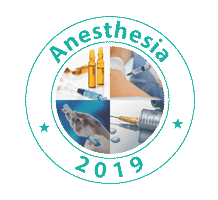Lago G
University of Parma, Italy University of Rome Tor Vergata, Italy
Title: Thoracoscopic video-assisted sympathicotomy for the treatment of hyperhidrosis: 20 years’ experience with minimally invasive technique
Biography
Biography: Lago G
Abstract
Statement of the Problem: Hyperhidrosis is a frequent disorder with an estimated prevalence of 3% in the general population. This condition carries relevant impairments in social relationships for the patients. Hyperhidrosis can affect different anatomical areas with palmar region being the most disturbing for everyday activities and social relevance. Several conservative and topical treatments are available for the patients but their efficacy is often limited and temporary. Video-assisted thoracoscopic sympathicotomy of T2 and T3 ganglia with a minimally invasive technique might represent a definitive treatment for palmar and axillary hyperhidrosis.
Methodology & Theoretical Orientation: This minimally invasive approach for thoracoscopic sympathicotomy was first described by Raposio et al., two decades ago. This single-entry thoracoscopic procedure is carried out with a specifically modified endoscope equipped with optic fiber and a wire loop for electrocautery at its distal end. Since 1995, 760 patients have been treated in our department with this surgical technique.
Findings: Out of 1520 thoracoscopic video-assisted sympathicotomy performed in the last 20 years, 1428 resulted in complete resolution of palmar hyperhidrosis. In 46 subjects, the procedure could not be completed due to the presence of vascular structures overlying sympathetic ganglia. In 6 patients symptoms relapsed after the procedure, most likely due to accessory sympathetic pathways. Only 2 patients complained of generalized compensatory hyperhidrosis.
Conclusion & Significance: Video-assisted thoracoscopic sympathicotomy represents a definitive treatment for palmar and axillary hyperhidrosis and it should be considered when conservative options failed to relieve the symptoms. This minimally invasive approach provides effective resolution for this disorder with minimal postoperative complication rate

